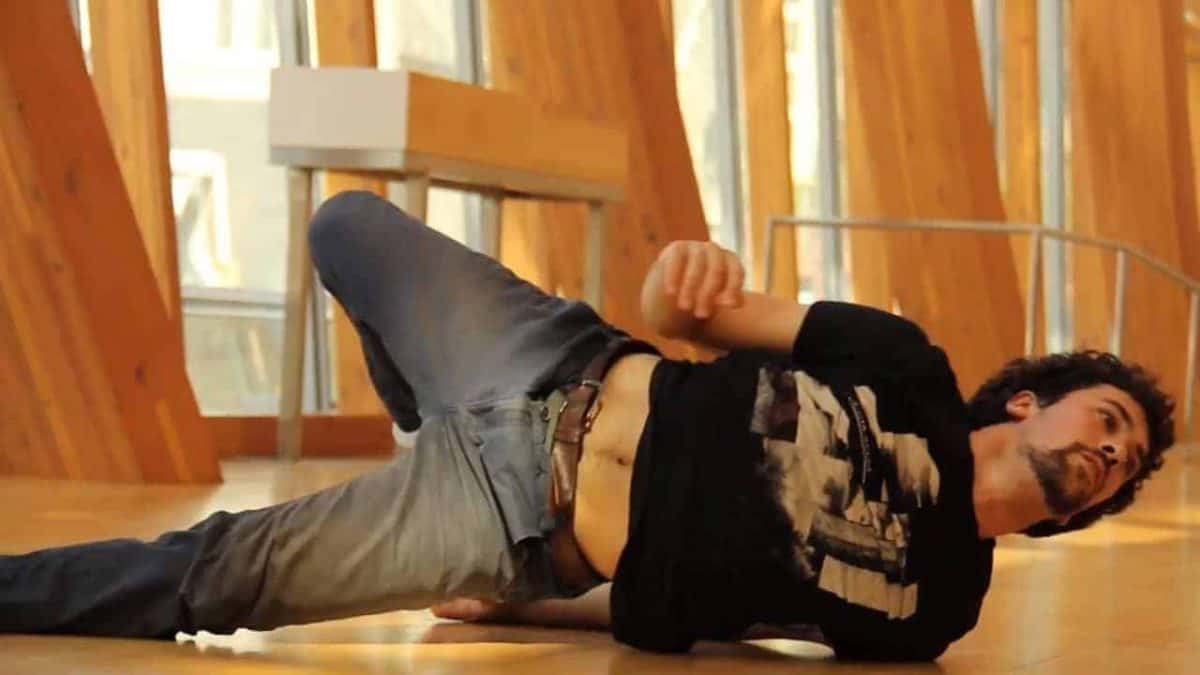Tom Weksler’s Movement Archery workshop was a lesson in angular momentum. We rolled, we spun, we bruised our pointy bits. Imagine an archer drawing back his bow, creating length and space from which to effortlessly propel himself. Spiralling was the general means to generate kinetic potential, from foot to head and left to right. The ‘trick’, it seemed, was channeling this energy efficiently into your desired movement or transition.
Archery symbolism has also been used to describe the ease of mind that accompanies intended action:
“The right art is purposeless, aimless. The more obstinately you try to learn how to shoot the arrow for the sake of hitting the goal, the less you will succeed in the one and the further the other will recede. What stands in your way is that you have a much too willful will. You think that what you do not do yourself does not happen.” — Eugen Herrigel
From his YouTube description: The emphasis in this Basic Structure is to look for Musicality and Momentum. The challenge is to make sure they lead the body until a decision to rest. All variations of the basic movement can serve like a “Jazz Orchestra” of the body – while some parts keep the direction and rhythm other parts can flow in and out of it. The work on the wall emphasizes support of spinal spirals with placement and coordination of the Hands and the Feet. Beginning Slowly and fluently is recommended and with time the goal is to build up confidence in faster tempo.
The Warm Up
I thought about this as ‘centering before you shoot’. It lasted approximately an hour and a half. Punctuated by spinal waves and rotational tides, it attempted to align breath with action and unify the internal and external operations of the body. A warm up is a ritual you use to tune the body and calibrate the self. Below are two snippets of the practice he led us through. Each section lasted three to four times longer than shown:
Switching from the preferred leg cross position and then keeping them there for the remainder of the breathing section was a genius way to find comfort in the uncomfortable. The outer edge of the foot get a lot of tough love to help it adapt to absorb load/ force.
There were many martial-arts inspired movements that spoke of Tom’s Eastern travels and influence. Grace became a tangent of control once rhythm was achieved:
Third clip shows the aforementioned rotational tides. Having the hands lift and drop avoided that unusable ‘too-far’ tension that can reside past controllable end range.
Floorwork
The following was the basic pattern we were taught and kept coming back to:
Side to back, side to stomach, combining back to stomach (or flipping the tortilla).
Three tenets to consider in making the Tortilla smooth:
- No part moves more than any other
- Parts should move at same speed and tempo
- Lift body as little as possible off the floor
The laying to sit rotations helped me solidify the importance of using the head:
Crossover rolls were an interesting way to find new transitions:
Here is an example of a fellow attendee, Jenn Pilotti, putting things together into a flowing piece:
A post shared by Jenn Pilotti (@bewellpersonaltraining) on
Acrobatics
Tom does not do cartwheels. He was pleasantly vehement about this. Being able to get the body more horizontal gives you more options for hand and foot placements, and offers a new context in which to control, utilize, and express motion. The boxes were replaced with people on all fours during the workshop:
This specific sequence represents my own method of learning. Choosing the most difficult side and using the hand that naturally wanted to do the least, then reversing, I let my brain develop synapses through my weaknesses. The second clip starts with me facing away and utilizing the spiral start. Eventually, the goal would be to remove the assistance of the boxes and be able to perform the movement in mid-air.
Games & Sample Practices
Wire Statue:
Ceiling to Floor:
Pick a body part, and try to achieve the impossible task of reaching it to a point in the ceiling. Start position was low as possible and the attempt lasted a minimum of five minutes.
Similarly, choose a part to connect to a point on the ground, but do not let yourself accomplish it. Start tall and reaching, and again, try to continue the exercise for at least five minutes. (Music helps).
8 Minute Walk Across:
Very slow walking, exactly as it sounds. Internal focus was to keep the hips level throughout. I noticed that if I minimized torso lean the hip adjustment occurred on its own. Followed by an interesting discussion on cultural perceptions of time.

